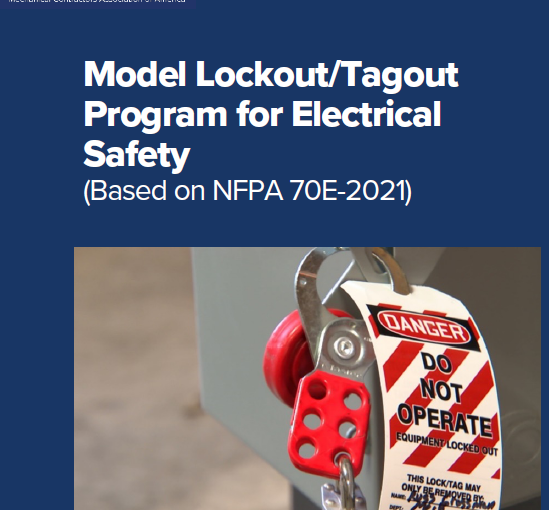The new administration is putting a lot of pressure on OSHA to perform COVID-19 related inspections and enforce the agency’s guidance to prevent the spread of COVID-19 in the workplace. OSHA’s new Special Emphasis Program (SEP) on COVID-19 gives the agency the impetus it needs to do just that. Employers should prepare for the possibility of unprogrammed and programmed COVID-19 inspections.
Unprogrammed Inspections:
To start, make sure you know your rights as an employer, so that you will not unnecessarily provide OSHA with information that could result in a citation. Unprogrammed inspections typically result from the mandatory reporting of a fatality, an employee complaint, or a referral from another government agency. When an inspection is unprogrammed you can limit the scope of the compliance officer’s inspection to the reason for the unprogrammed inspection. For example, if an employee complains to OSHA that the portable toilets are not being regularly sanitized, and that complaint results in an unprogrammed inspection, you can limit OSHA to inspecting only those toilets and prevent the compliance officer from seeing other areas of the jobsite. However, compliance officers can issue citations for safety violations they identify while on the way to inspect the subjects of unprogrammed inspection, so choose the path and mode of transportation to that subject area wisely.
- Compliance officers are required to hold pre-inspection conferences. Make sure the conference occurs. There have been cases where compliance officers have omitted this required step in the process;
- Make sure your company is represented at the conference by someone who knows what to ask and understands how to respond;
- The instant the conference begins your company representative should ask the compliance officer for the reason for the inspection;
- If it is an unprogrammed inspection, limit the compliance officer to the area of the jobsite where the incident that resulted in the inspection occurred, i.e., where the fatality occurred, the specific area of the employee complaint, or the specific area stated in the referral; and
- Never leave a compliance officer alone to wander the jobsite. Even though it is an unprogrammed inspection, if a compliance officer sees a violation, he or she can still issue a citation that is unrelated to the reason for the unprogrammed inspection.
Programmed Inspections:
Programmed inspections are randomly selected by OSHA from Dodge Reports. Get prepared ahead of time in case your company is working on a project that comes up for a programmed COVID-19 inspection. To get prepared, consider what the compliance officers are most likely to look for during the inspection process, and what standards that they are most likely to cite.
Based on OSHA’s most recent COVID-19 compliance directive its compliance officers will be looking specifically for the following items during COVID-19 inspections:
- Evidence of retaliation against workers for actions related to the virus;
- Use of face coverings or masks throughout the workplace;
- Active encouragement of workers to stay home if they are sick;
- Proper social distancing and accommodating workers with telework where possible;
- Emphasis on proper respiratory etiquette;
- Emphasis on proper hand hygiene;
- Routine environmental cleaning; and
- Planning for possible infectious disease outbreaks in the workplace.
Since OSHA does not currently have a COVID-19 standard, the agency uses existing standards to enforce worker COVID-19 protection. When performing COVID-19 inspections the agency is most likely to issues citations from provisions in the following standards and its general duty clause.
Mechanical Service and Fabrication Shops:
- 29 CFR 1904 – Recording and Reporting Occupational Injuries and Illnesses;
- 29 CFR 1910.132 – General Requirements – Personal Protective Equipment;
- 29 CFR 1910.134 – Respiratory Protection;
- 29 CFR 1910.141 – Sanitation;
- 29 CFR 1910.145 – Specification for Accident Prevention Signs and Tags;
- 29 CFR 1910.1020 – Access to Employee Exposure and Medical Records;
- 29 CFR 1910.1030 – Bloodborne Pathogens; and
- Section 5(a)(1) – General Duty Clause – From the OSH Act of 1970.
Mechanical Construction:
- 29 CFR 1904 – Recording and Reporting Occupational Injuries and Illnesses;
- 29 CFR 1926.28 – General Requirements – Personal Protective Equipment;
- 29 CFR 1926.33 – Access to Employee Exposure and Medical Records;
- 29 CFR 1926.51 – Sanitation;
- 29 CFR 1926.103 – Respiratory Protection;
- 29 CFR 1926.200 – Accident Prevention Signs and Tags; and
- Section 5(a)(1) – General Duty Clause from the OSH Act of 1970.
If you have any questions or need any assistance protecting your workers from COVID-19 orpreparing your company for possible OSHA COVID-19 related enforcement, please contact Pete Chaney at pchaney@mcaa.org or 301-990-2214.














